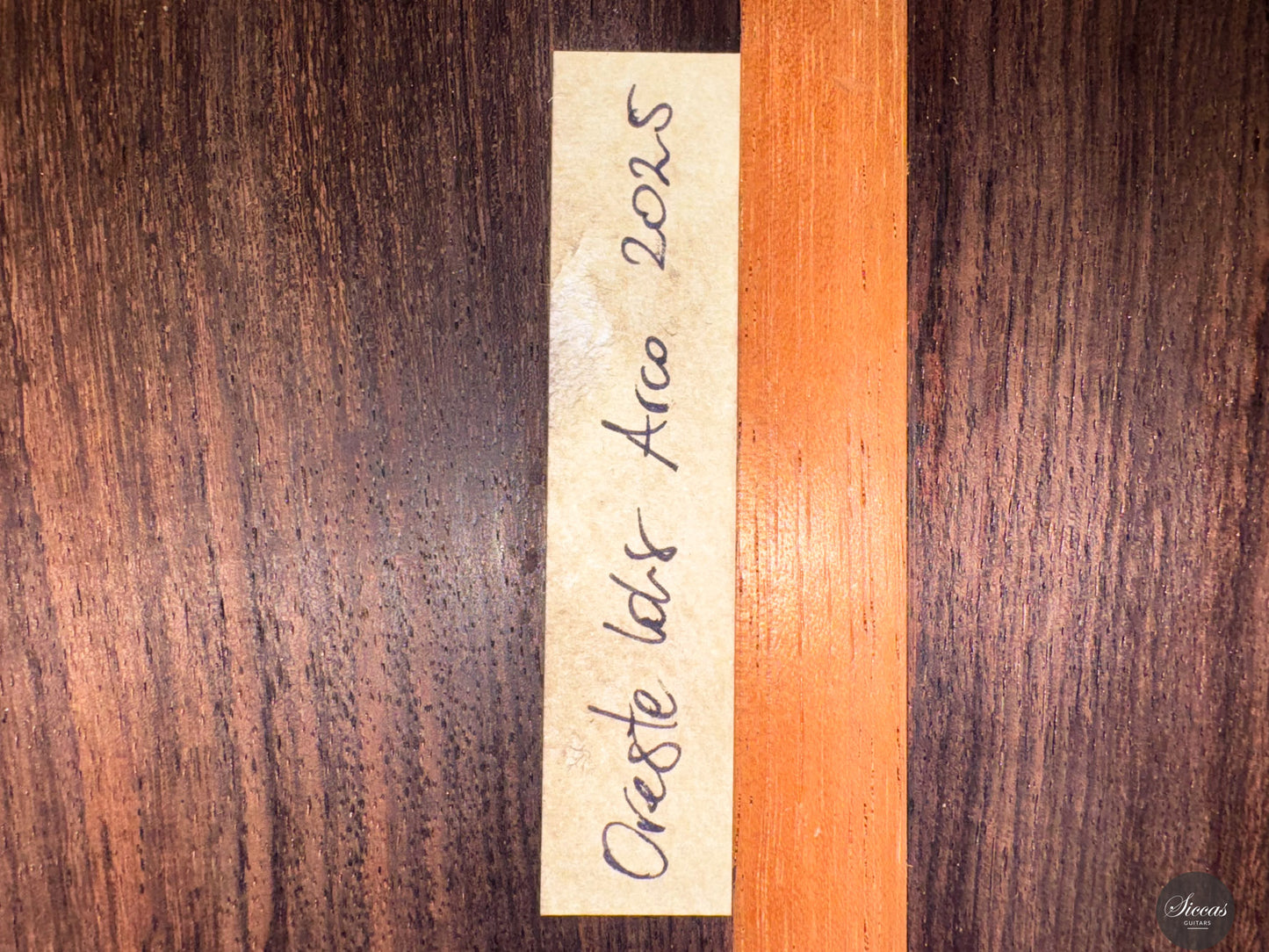Oreste Lohs - 2025 - N.21
Oreste Lohs - 2025 - N.21
Details
Details
Overview
Overview
Shipping important note
Shipping important note
Delivery times are typically reliable and most instruments arrive within the estimated timeframe.
Should any unexpected delay occur, our team will keep you informed and provide support at every step. For all shipping details and exceptions, please see our Shipping Policy.
Details about GPSR
Details about GPSR

























Video overview


More details about the guitar
About the luthier
Oreste Lohs is a young guitar maker from northern Italy, based in Arco near Lake Garda. After taking classes with Daniele Chiesa, he developed a personal building philosophy rooted in tradition, craftsmanship, and sensitivity to sound. He constructs only a small number of instruments each year, dedicating himself fully to each one. Lohs favors hand tools over machines, minimizing the use of electricity to maintain a direct connection with the wood. He has also drawn inspiration from Daniele Chiesa, one of the important contemporary figures of the Granadan school of guitar making. His guitars are built with a rigorous and careful approach, yet they are imbued with passion, for the instrument, for tradition, and for sound. Every detail is refined with sensitivity and precision, from the overall conception to the finishing touches. This blend of discipline and artistic vision results in guitars that embody a traditional voice while presenting a clear personal identity.About the guitar
This instrument, No. 21 from 2025, exemplifies Lohs’s dedication to traditional guitar making. Built with a spruce soundboard and Indian rosewood back and sides, it is finished in French polish. At only 1375 grams, it is exceptionally light, echoing the ideals of the Granadan school, where lightness, clarity, and refined detail are paramount. The air resonance lies between G and G#, supporting a balanced and responsive tonal foundation. Alessi tuners complete the elegant setup. The sound is sweet, lyrical, and deeply expressive. Its response is quick and even, offering both projection and subtle color. The instrument is remarkably comfortable to play, supporting the guitarist with ease from the first touch. Visually striking and sonically captivating, this guitar represents an accomplished and personal statement from a young luthier whose work is already marked by refinement and originality. It is an excellent choice for players seeking a traditional, expressive concert guitar at an attractive stage in the maker’s career.Regular care extends the life of the instrument
Even with careful use, a classical guitar may gradually change in appearance or respond to unstable storage conditions. Have a close look at your guitar regularly and be attentif to changes. If your instrument is suffering from its environement, it will let you know.
Protect Your Guitar: Handle with Care
Be mindful when touching your instrument with greasy or unwashed hands: any skin contact is a small attack on the varnish. Of course, a guitar is made to be played, but taking a few precautions helps preserve its beauty: wash your hands before playing, wear long sleeves, and avoid unnecessary direct skin contact with the body of the instrument.
Pro tip: Avoid playing with a button-up shirt, heavy jewelry, or a belt, as these can scratch the guitar. Also, make sure your guitar case is free of any objects that could damage the instrument during storage.
String care
A good habit to adopt is wiping down your strings briefly after each playing session. This small action significantly extends their lifespan and helps maintain a consistent, comfortable feel under your fingers.
Most importantly, clean strings are essential for keeping your instrument in tune. Corrosion, sweat, and dust can affect the uniformity of the strings and interfere with accurate tuning across the entire fingerboard.
Pro tip: If you're having trouble getting your guitar in tune, it might be time to change the strings. A useful test is to compare the pitch of the 12th fret harmonic with the fretted note at the 12th fret; if there's an unusually large gap between them, your strings may have lost their integrity and should be replaced.
Keep Your Shellac Finish Shining!
Got a guitar with a shellac (French polish) finish? Here's a simple trick: Take a clean microfiber cloth and gently breathe on the surface to create a light mist. Then, softly rub to remove fingerprints, sweat, and grease. That’s usually all it takes to keep it looking great, no products needed!
Pro tip: Every few years, treat your guitar to a check-up with a luthier to keep it in top shape.
Storing Your Guitar: Climate Matters
Your guitar can safely stay outside its case, as long as the surrounding environment maintains 42–55% humidity and a temperature between 18–25°C.
Keep in mind that humidity levels can still fluctuate inside the case, especially during seasonal changes.
- Too much humidity may cause overtightened strings and a dull tone.
- Too little humidity can lead to a bulging top, string buzz, or even cracks.
Avoid placing your guitar near radiators, air conditioners, or windows with direct sunlight.
Pro tip: Always close your guitar case while playing. This helps preserve a stable microclimate inside the case, so your instrument is protected the moment you put it back in.





















































